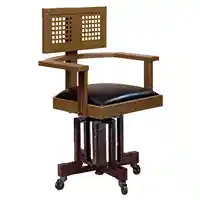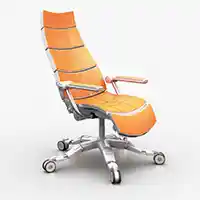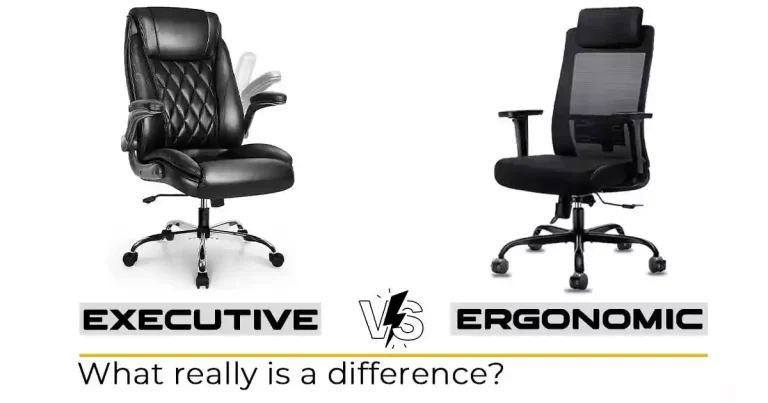The Evolution of Office Chairs
The simple desk chair or ergonomic office chair we use today in our homes and offices has gone a long way to achieving its present shape, size, and features. Still, research and innovation are continued. As it is extremely difficult to understand modern developments in an invention without knowing its timeline or chronological context.
Therefore, we are giving you a complete account of the evolution of office chairs in this article so that you can track future trends and developments in the designs of traditional or ergonomic chairs.
The Evolution of Office Chairs
The office chair is one of the most important pieces of furniture around us and office workers spend an average of about 6 hours daily on it.
But the chair we now use in our home and office workspaces were never the same always. Here is the complete history of office chairs from their early origins to later modifications.
Early Office Chairs: Wooden Stools
It is difficult to trace who exactly invented the office chair; however, sources indicate that many centuries ago, Egyptian artisans used sitting stools while working. Of course, those stools lacked all the features a modern office chair provides today. Also, the sitting experience used to be very uncomfortable and unsupportive for the users.
As far as the classic model of the office chair is concerned, it first came into existence during the first half of the 17th century. Charles Darwin (1809_1882), the founder of the theory of evolution, played a key role in developing the basic structure of an office chair.
He attached wheels and extra legs to his simple chair so he could easily swivel across his workspace. His design of the wooden arm chair was undoubtedly a pivotal point in the development of the modern office chair.
Another name associated with the early development of office chairs is Thomas E Warren. He was a US inventor who, along with the American Chair Company, designed a Centripetal Spring Armchair in 1849. This chair featured a swivel mechanism and castors so that office workers could easily move around. However, those early models were used mainly by top-notch government officials and wealthy aristocrats at that time.
Industrial Revolution and Mass Production of Office Chairs
Before the dawn of the industrial revolution, most people were unaware of the concept of an office chair although they did use other forms of seating in their offices and workspaces. However, the growth of industries, mass production of goods, and transportation developments during the industrial revolution increased the trade of goods and services across long distances.
With that, the need for administrative staff for different jobs such as procurement of goods, logistical coordination, finance management, and marketing requirements also increased. Since a large number of the workforce shifted from agricultural to industrial and administrative sectors, the need for mass production of office chairs was also felt. Therefore, office chairs were produced on a large scale at that time and became very popular.
Mid-20th Century and the Designs
During the mid-20th century, manufacturers gave huge preference to designing sleek and aesthetic office chairs. In this regard, plastic casters, metallic chair bases, and sleek and modern designs were incorporated which gave an aesthetic appeal to office chairs.
In terms of looks and visual appeal, office chairs in that era were almost the same as those we use today. However, the ergonomics factor was completely ignored in them for instance, chairs rarely lowered less than 18 inches from the floor, which caused different health injuries to users. This prompted manufacturers to improve the design of the ergonomic chair or task chair.
The Rise of Ergonomics in Office Chairs
In the latter half of the twentieth century, ergonomics started influencing the designs of office chairs. In this regard, Neil Diffrient’s book Humanscale has crucial importance. In this book, Neil quoted different research from military and industrial experts regarding the importance of ergonomics in reducing work-related injuries and improving employees’ productivity. His studies were primarily aimed at designing simple and sustainable office chair models.
Further, in 1970, US President Richard Nixon enforced the Occupational Safety and Health Administration Act (OSHA) which legally bound companies to provide safe working environments to employees. Keeping all these factors under consideration, William Stumpf designed the Ergon Chair in 1976 in which molded foam was used so that it could be easily customized according to the body contours of the individual.
Although this chair lacked many of the features of a modern office chair, it was a landmark achievement in the field of ergonomics and inspired later models such as the Aeron chair. All these findings eventually helped in designing modern office chairs available today in markets.
High Tech Features and Modern Ergonomic Office Chairs
As the internet went live for the world in 1991, a global rise in health problems was witnessed due to the sedentary time spent on computers. Therefore, the need for a better seating arrangement was badly felt all around the world. In this regard, Bill Stumpf and Don Chadwick collaborated to design the Aeron Chair in 1994.
This chair featured a mesh back for supporting the back and regulating the body temperature. The chair was available in three different sizes covering 95% of body types. This chair undoubtedly broke new ground. The first gaming chair was released in the markets in 2006 by DX Racer- a car seat manufacturing company. This chair featured adjustable armrests, lumbar support, a reclining mechanism, a removable headrest, and thick padding.
The gaming chair was received very well and new designs and features were incorporated into it in the years to come. Since then, the latest models with high-tech features such as posture correcting technology, built-in airflow and temperature control, integrated massage, smart sensors, and self-adjusting headrests are coming to the markets on a day-to-day basis by different companies.
What’s Next: The Future of Office Chairs
Office chairs we use today have undergone massive transformations over the centuries to achieve aesthetic and ergonomic excellence. Looking ahead, it can be said that the designs of office chairs would be more ergonomic, technologically advanced, and sustainable in the years to come.
Future office chairs would have more adjustable features for providing greater comfort and customization to users. They are more likely to be built from recycled materials for reducing waste materials and conserving resources.
They may feature built-in sensors and monitoring systems for tracking users’ posture and alerting them to adjust their position when needed. Integrated heating, cooling, and massage functions would also be more common in future office chairs.
In essence, office chairs in the future would be more comfortable, functional, and environmentally friendly in contrast to the chairs available today in the markets.
However, modern researches show that standing is more beneficial for human health rather than sitting during working hours. It is because long hours of sitting are associated with certain health risks such as obesity, diabetes, cardiovascular diseases, and cancer (especially cancers of the colon or breast).
Therefore, more and more people are now inclined towards getting standing desks for their workspaces. But it does not imply that the standing desk is going to replace the office chair in the coming years by any means. It can only complement the office chair for a better and more productive working experience.
For the future of office chairs, just like any office furniture, it can be said that the sky’s the only limit. However, a sad reality is that high-end ergonomic office chairs are still inaccessible to the majority of remote workers, freelancers, and even clerical workers due to their sky-high prices. In this regard, future office chairs should be made more economical so that they can easily be accessed by all sorts of workers.
Last Thoughts!
In a nutshell, the evolution of office chairs has been a long process encompassing many centuries. In the beginning, it used to be a simple wooden structure with no adjustment mechanism. The period of the industrial revolution witnessed a great shift of human force from agricultural land to administrative departments.
This made office chairs more common and easily accessible to many workers. During the second half of the twentieth century, the focus shifted toward designing ergonomic models. Later high-tech features were incorporated into the designs and still research is being carried on to design more aesthetic and ergonomic models.










